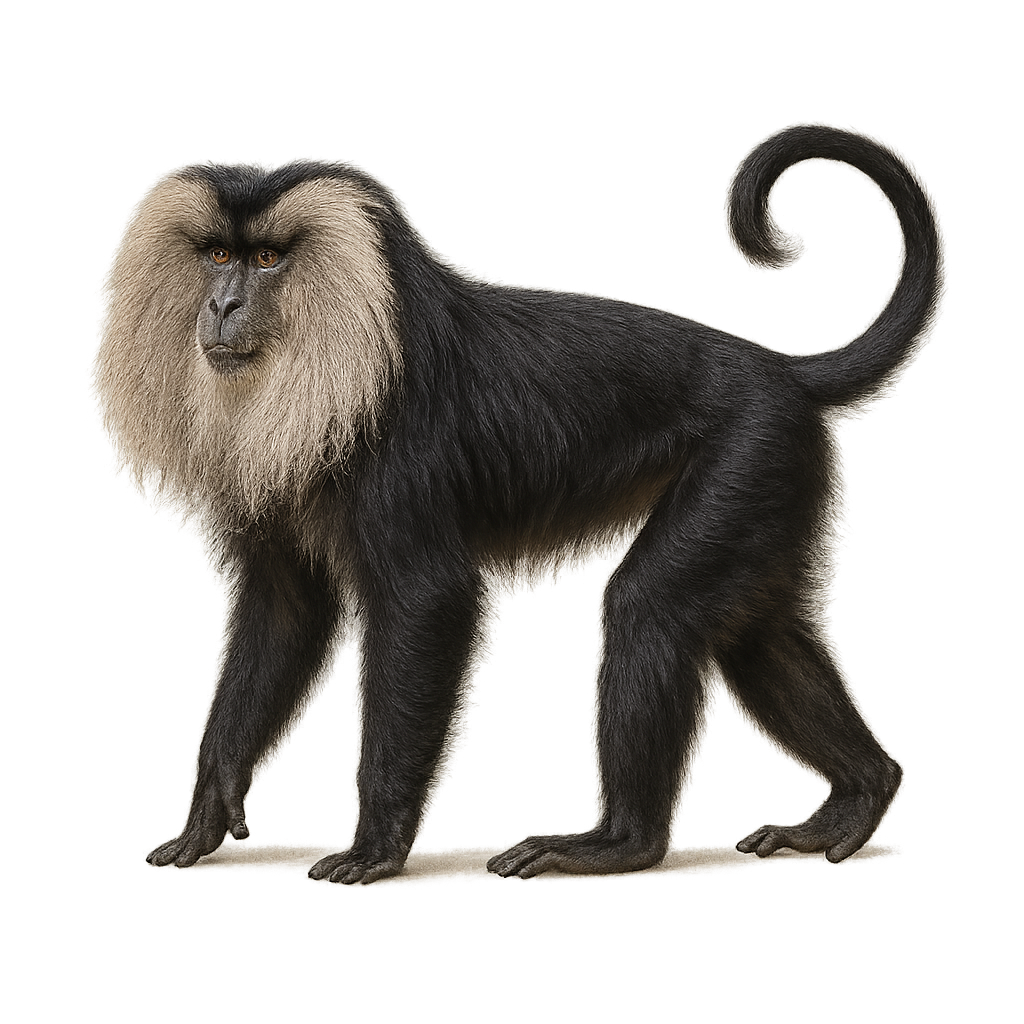Your wildlife photography guide.
Explore the lion-tailed macaque in detail, study its behavior, prepare your shots.
Where to observe and photograph the lion-tailed macaque in the wild
Learn where and when to spot the lion-tailed macaque in the wild, how to identify the species based on distinctive features, and what natural environments it inhabits. The WildlifePhotographer app offers tailored photography tips that reflect the lion-tailed macaque’s behavior, helping you capture better wildlife images. Explore the full species profile for key information including description, habitat, active periods, and approach techniques.
Lion-tailed macaque
Scientific name: Macaca silenus

IUCN Status: Endangered
Family: CERCOPITHECIDAE
Group: Mammals
Sensitivity to human approach: Suspicious
Minimum approach distance: 10 m
Rut period: August to October
Gestation: 170-180 jours
Births: January to March
Habitat:
Tropical rainforests, canopy
Activity period :
Primarily active during the day, with peak activity in the morning and late afternoon.
Identification and description:
The Macaca silenus, or lion-tailed macaque, is a primate endemic to the Western Ghats of India. Recognizable by its silver mane surrounding a black face, it is one of the most distinctive macaques. Its tail, reminiscent of a lion's, is another characteristic feature. This macaque primarily inhabits tropical rainforests, spending most of its time in the canopy. It is omnivorous, feeding on fruits, leaves, insects, and small vertebrates. Unfortunately, it is threatened by deforestation and habitat fragmentation, leading to a significant decline in its population. Conservation efforts are crucial for its survival.
Recommended lens:
400 mm – adjust based on distance, desired framing (portrait or habitat), and approach conditions.
Photography tips:
To photograph the lion-tailed macaque, it is advisable to use a telephoto lens of at least 400mm to capture detailed images without disturbing the animal. Patience is key, as these macaques are often suspicious and move quickly through the canopy. Look for moments when they are feeding or engaging in social interactions, as this can provide unique opportunities. Be sure to respect the safety distance to avoid stressing the animals and use a tripod to stabilize your camera in the dense forest.
The WildlifePhotographer App is coming soon!
Be the first to explore the best nature spots, track rutting seasons, log your observations, and observe more wildlife.
Already 1 432 wildlife lovers subscribed worldwide

